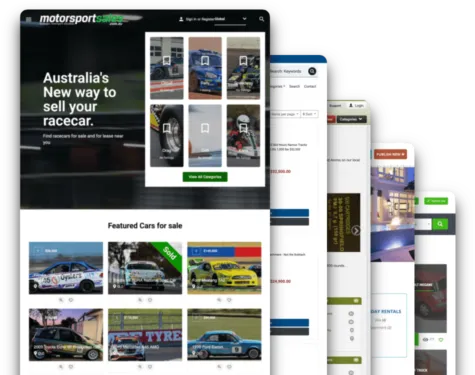In today’s fast-paced digital landscape, mobile responsiveness is no longer optional—it’s essential.
For online classified marketplaces, the stakes are even higher, as these platforms cater to diverse users on the go.
![]()
Whether buying, selling, or browsing, users expect seamless experiences across all devices.
Ignoring mobile-first strategies can lead to lost traffic, reduced engagement, and ultimately, revenue decline.
This article explores the pivotal role mobile responsiveness plays in online classified marketplaces, delves into challenges and solutions, and highlights real-world success stories.
The Importance of Mobile Responsiveness in Classified Marketplaces
User Behavior Trends Favoring Mobile
- Mobile traffic dominance: Over 60% of internet traffic now originates from mobile devices.
- Buyer and seller habits: Most users list items, browse categories, and communicate directly through their smartphones.
- Instant accessibility: Mobile-responsive platforms allow users to access the marketplace anytime, anywhere.
Impact on Engagement and Retention
- Higher interaction rates: Mobile-friendly sites boast up to 70% more time-on-site compared to non-responsive counterparts.
- Reduced bounce rates: Users are 88% less likely to leave a site that offers smooth navigation on mobile.
- Better conversion: Mobile-responsive marketplaces have up to 15% higher transaction rates.
Search Engine Optimization (SEO) Advantage
Google’s mobile-first indexing means non-responsive sites rank lower.
A mobile-friendly site ensures faster page loading times, a key factor in search engine rankings.

Challenges of Ensuring Mobile Responsiveness
Technical Limitations
- Device diversity: Hundreds of screen sizes and resolutions require adaptable designs.
- Performance optimization: Large images and complex scripts can slow down mobile loading speeds.
User Experience Complexity
- Navigational issues: Ensuring simple, thumb-friendly interfaces can be challenging.
- Input methods: Mobile users often rely on touch, which requires precise design elements.
Solutions for Creating a Mobile-Responsive Marketplace
Embrace a Mobile-First Approach
- Start small: Design for the smallest screen first and scale up.
- Prioritize features: Highlight critical actions like posting ads, searching, and messaging.
Implement Responsive Web Design (RWD)
- Flexible grids: Ensure layouts adjust fluidly across devices.
- CSS media queries: Adapt styling rules based on screen size.
Optimize Performance
- Image compression: Use tools to reduce image sizes without compromising quality.
- Lazy loading: Load images only when users scroll to them.
- Content Delivery Networks (CDNs): Speed up content delivery globally.
Test Across Devices
- Use platforms like BrowserStack to test responsiveness on various devices.
- Continuously gather user feedback to refine the mobile experience.

Case Studies: Real-Life Success Stories
Facebook Marketplace
Mobile-first focus: Designed primarily for mobile users, Facebook Marketplace integrates seamlessly with its app.
Results: Reports indicate over 1 billion users engage with the platform monthly, with mobile driving 80% of traffic.
OLX
Responsive overhaul: OLX revamped its platform to prioritize mobile responsiveness, leading to a 30% increase in user retention.
Airbnb
While primarily a booking platform, Airbnb’s success hinges on its mobile-first design.
Impact: The majority of bookings now occur via mobile devices, showcasing the importance of a streamlined user experience.
Innovations and Evolving Strategies
Progressive Web Apps (PWAs)
Combine the best of web and app experiences.
- Benefits include offline functionality, push notifications, and faster loading.
Voice Search Integration
As voice search becomes mainstream, responsive marketplaces need to optimize for spoken queries.
AI-Powered Interfaces
AI-driven chatbots and recommendation engines enhance mobile user engagement.
5G Revolution
Faster mobile speeds will enable richer features like augmented reality (AR) in listings.
The Future of Mobile Responsiveness in Marketplaces
Hyper-Personalization
Marketplaces will use AI to deliver tailored experiences based on user preferences, device history, and location.
Seamless Payment Integration
Mobile wallets and one-click payment options will become standard, reducing friction during transactions.
Gamification
Features like reward points and interactive designs will keep users engaged on mobile.
Call-to-Action
Looking to create a marketplace that’s optimized for mobile success?
Contact us at Yclas to build a mobile-responsive marketplace today!

